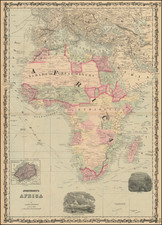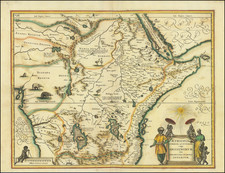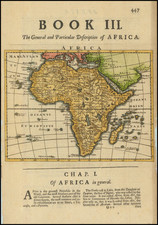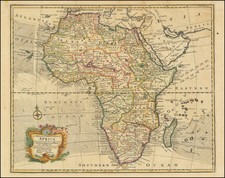Rare Price-Senex map of Africa, dedicated to Owen Brigstocke
This rare two sheet map provides a highly detailed look at the coast and interior of Africa, at a time when it was still very much the Dark Continent. Includes a host of annotations, including apocryphal notes regarding local peoples, animals, indigenous gems, mines, etc.. Ornate cartouche shows native flora and fauna, in gorgeous full color.
John Senex (1678-1740) was one of the foremost mapmakers in England in the early eighteenth century. He was also a surveyor, globemaker, and geographer. As a young man, he was apprenticed to Robert Clavell, a bookseller. He worked with several mapmakers over the course of his career, including Jeremiah Seller and Charles Price. In 1728, Senex was elected as a Fellow of the Royal Society, a rarity for mapmakers. The Fellowship reflects his career-long association as engraver to the Society and publisher of maps by Edmund Halley, among other luminaries. He is best known for his English Atlas (1714), which remained in print until the 1760s. After his death in 1740 his widow, Mary, carried on the business until 1755. Thereafter, his stock was acquired by William Herbert and Robert Sayer (maps) and James Ferguson (globes).
Charles Price (1679?-1733) was an engraver, instrument maker, and mapseller.
Price had been apprenticed to John Seller, famous mapmaker and father to Charles’ business partner, Jeremiah. In fact, Jeremiah and Charles were made free of the Merchant Taylors Guild on the same day, September 1, 1703. The two were already working together by then.
After breaking off with Seller, Price worked with John Senex (1705-10) and George Wildey (1710-13). He was still working in the 1720s, but was in Fleet Prison in 1731 for debt and died two years later.












![[ Atlantic Ocean / Triangular Trade / Negroland ]](https://storage.googleapis.com/raremaps/img/small/65187.jpg)

![[Africa] Prima Tavola](https://storage.googleapis.com/raremaps/img/small/96586.jpg)